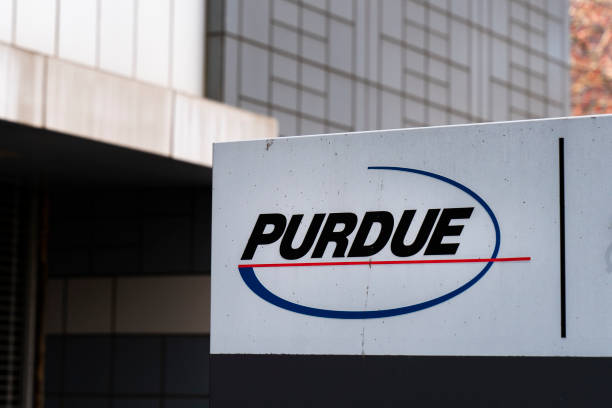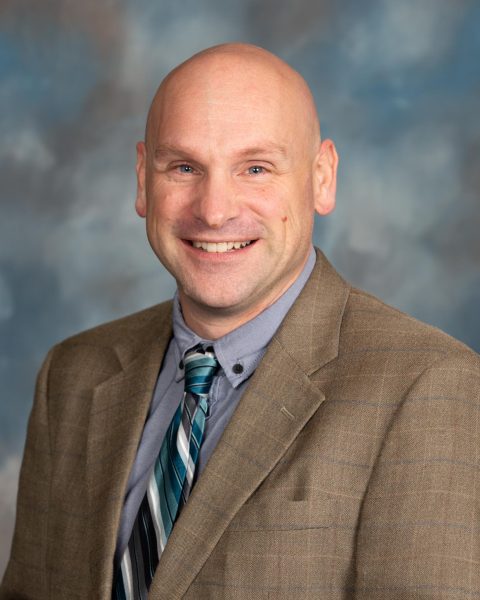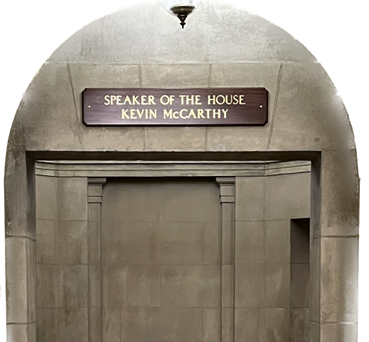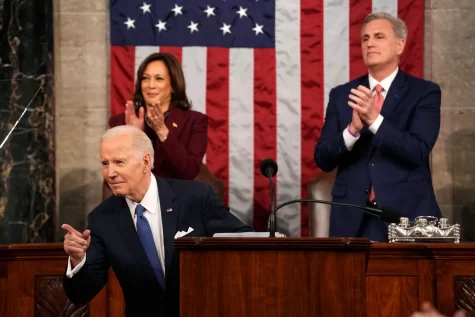Purdue Pharma and the Opioid Epidemic
(Photo by Drew Angerer/Getty Images)
January 7, 2021
The opioid Oxycontin, when described with the words of Purdue Pharma officials, sounds at first like a miracle drug. “… our studies suggest that OxyContin is an ideal choice in progressive pain management when around-the-clock therapy is indicated,” stated Dr. Paul Goldenheim in a press release for the drug. An advertisement towards Canadian doctors touts this as well: “One to Start and Stay With… Easy to Dose, Easy to Titrate.” Indeed, when looking at the rabid and exhaustive ad campaign put out by Purdue Pharma, it is difficult to see the downsides of such a drug: fast-acting, effectively healing, and, if looking at the words, safe and non-addictive as well. In a time when pain was often seen as inadequately treated by physicians, Oxycontin arose as a savior for those in severe pain.
However, the realities surrounding Oxycontin are far murkier and far more dangerous, as is now clear (and, some will argue, was clear then as well). In contrast to the words put out by the rabid ad campaign of Purdue Pharma, the drug is highly addictive. In 1999, 400,000 people admitted to using Oxycontin for non-medical purposes; by 2003, this number had increased to 2.8 million. Oxycontin, which contains oxycodone, a substance related to heroin, pushed some to seek the latter drug to further satiate their addictions. The opioid epidemic, as it began to be called, subsequently arose, and by 2018, nearly 15,000 people had died from the use of opioids. 32% of these deaths were from medically prescribed opioids. Many claim now that these deaths are at the hands of Purdue Pharma, in particular the Sackler family, who started Purdue Pharma and amassed great wealth from the sales of OxyContin.
Purdue Pharma was founded by Arthur Sackler and continued by his family. The Sacklers are, for obvious reasons, a controversial family: they are known by some as medical pioneers and great philanthropists for their donations towards artistic institutions such as the Metropolitan museum, but they are known by others as avaricious criminals who profited off of the opioid crisis and the resulting deaths. Since the beginning of the opioid crisis, the Sacklers have continually denied any responsibility in the crisis: In 2019, Therese Sackler , a prominent philanthropist of the family, expressed sympathies for the crisis, but stated that she was “…still rejecting the false allegations made against the company and several members of the Sackler family.” Just a couple of weeks ago, on December 17th, 2020, David Sackler , a third-generation member of the family, asserted that “Oxycontin is a medicine that Purdue intended to help people, and it has helped, and continues to help, millions of Americans.” In the same interview, David’s cousin Kathy Sackler stated that “I have tried to figure out if there’s anything I could have done differently knowing what I knew then… There is nothing that I can find that I would have done differently.”
Despite these assertions by members of the Sackler family, the evidence was present, both then and now, that Oxycontin had the potential to become a dangerous drug. In a clinical study conducted by Purdue Pharma, 82% of patients receiving CR Oxycodone 20 mg had some sort of adverse side effect. The study concluded that “…CR Oxycodone is a safe and effective analgesic for the control of pain.” Doctors initially wished to be cautious when it came to Oxycontin, but Purdue’s ambitious ad campaign pushed it for general use, not just severe pain.
During the early 2000s, opioid use began to starkly increase. However, Purdue Pharma continued to fight for Oxycontin. In a 2001 hearing with Congress, Purdue executive Dr. Paul Goldenheim stated that “addiction is not common, addiction is rare in the pain patient who is properly managed.” Purdue Pharma continually worked on its ad campaign to bring Oxycontin into general care use, and they found success. A GAO study found that by 2003, roughly half of all Oxycontin prescribers were primary care physicians, and thus lacked exhaustive training in pain management.
But institutions were starting to take notice and action, the beginning steps in a long fight against the now raging opioid epidemic. In August of 2001, Connecticut Attorney General Richard Blumenthal called for Purdue Pharma to make sweeping changes to their distribution methods, stating in a letter to former chairman and president Richard Sackler that “Addiction is a real, present, and growing danger.” These changes included a call to restrict sales to physicians with expertise in pain management and to create a treatment and rehabilitation program.
Calls for change and regulation were also echoed and fulfilled by federal institutions. After approving Purdue Pharma’s Oxycontin in December of 1995, the FDA later began fighting against its rapid growth and flooding into the black market. In 2003, the FDA issued a warning letter against Purdue Pharma’s ad campaign. In 2009, the FDA launched the Safe Use Initiative, aimed at reducing preventable harm from opioids through collaborations of public and private sectors within the medical community. Most notably, in 2007, the legal battle against Purdue Pharma began, with Purdue Pharma officially taking responsibility for a fraudulent ad campaign for Oxycontin. In the lawsuit, federal officials asserted that this campaign included fake scientific charts and theories portrayed as facts.
In the midst of this fight against the opioid epidemic, Purdue subtly began to shift its practices as well; it reformulated the destructive Oxycontin with a new version of it, that when crushed, became a gummy substance, contrasting the previous fine, chalk-like texture of the old one that allowed it to be snorted. Purdue, taking this step forward, seemed to acknowledge the faults of the old without truly taking responsibility. However, Purdue paired this with the monopolizing of oxycodone, pleading to the FDA that the generic versions were dangerous. With these other brands out of the way, Purdue became one of the sole suppliers of oxycodone. This, paired with the fact that it is still incredibly unclear whether or not the reformulation truly made a difference, paints the intentions of Purdue as much less sincere as could otherwise be interpreted.
But, as time went on, evidence against Purdue began to surmount. In 2012, a study sponsored by Purdue Pharma discovered that 76% of those seeking help for heroin addiction began with pharmaceutical narcotics. The primary narcotic was Oxycontin. In 2017, the city of Everett, Washington, sued Purdue, alleging that Purdue failed to properly track and regulate suspicious excess ordering or black-market usage. In 2018, six more states charged Purdue Pharma with deceptive marketing; by the beginning of 2019, this number increased to 36.
Indeed, 2019 was the year when Purdue Pharma began to face large repercussions for Oxycontin. In March of that year, it settled a lawsuit with Oklahoma for 270 million dollars. August 2019, Purdue Pharma began negotiations for settling with up to 12 billion dollars. In addition, Purdue would be restructured into a for-profit public health trust. In September of the same year, Purdue filed for bankruptcy as a part of the settlement, and the Sacklers withdrew 10.7 billion dollars, redirecting it towards family trusts.
In October 2020, Purdue settled for 8 billion dollars and agreed to be restructured as a public trust, operating under the scope of the government. The following month, Purdue Pharma admitted to four central accusations: lacking a proper program to divert drugs from going into the black market (despite telling the DEA that it had maintained such a program), utilizing misleading and false marketing to sell their product, paying doctors to prescribe Oxycontin, and paying a medical company to send doctors information in order to encourage use of opioids.
Such a conclusion for Purdue Pharma would sound like a victory in the fight for justice, but for many, such a victory rings hollow. The Sackler family, those who amassed the personal wealth behind the opioid epidemic, are not charged. No Purdue executive is facing prison time, and no individual person is facing any consequences. In the scope of such a devastating crisis, the only thing actually being punished is a faceless corporation.
The Sackler family and Purdue Pharma, have, through their work, brought upon an epidemic that has killed thousands and put many more lives into jeopardy. As the crisis continues to worsen, especially during this pandemic, the Sackler family has faced little genuine consequence. The medical community has been deeply troubled by this predicament and will likely be for many more. When it comes to healthcare, profit can never be prioritized over humanity. The Sackler family blatantly disregarded this principle, and thus brought about a wave of addiction, pain, and death.
Sources:
https://www.nytimes.com/2019/03/28/health/new-york-lawsuit-opioids-sacklers-distributors.html
https://web.archive.org/web/20061219073015/http://www.ct.gov/ag/cwp/view.asp?A=1776&Q=283348
https://documents.latimes.com/oxycontin-press-release-1996/
https://www.documentcloud.org/documents/5745056-Depo-022019.html
https://www.fda.gov/media/106638/download
https://apnews.com/article/purdue-pharma-opioid-crisis-guilty-plea-5704ad896e964222a011f053949e0cc0
https://www.newyorker.com/magazine/2017/10/30/the-family-that-built-an-empire-of-pain
https://www.nytimes.com/2007/05/10/business/11drug-web.html?auth=login-google











